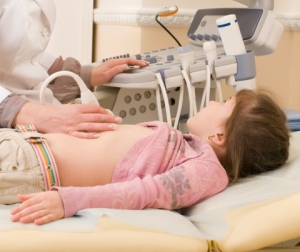 When it comes to renal ultrasound in children, the indications are straightforward. If you see blood in the urine or a child has white crystals or is fussy with his bowel movements, this is a sign that may require additional investigation. However, if you see any of these signs with no cause being suspected or if the child has a fever and vomiting, it’s highly recommended that the test be undertaken immediately. This post will shine a light on various aspects of renal ultrasound testing.
When it comes to renal ultrasound in children, the indications are straightforward. If you see blood in the urine or a child has white crystals or is fussy with his bowel movements, this is a sign that may require additional investigation. However, if you see any of these signs with no cause being suspected or if the child has a fever and vomiting, it’s highly recommended that the test be undertaken immediately. This post will shine a light on various aspects of renal ultrasound testing.
What Is A Renal Ultrasound Test?
Renal ultrasound is a diagnostic imaging test used to determine kidney function in children and adults. It’s typically performed with an ultrasound machine that sends out sound waves and measures how long it takes for those sound waves to reflect from tissues in the body.
The echoes received by the transducer are analyzed by software that determines how far away from the transducer each echo was when it reached it, allowing doctors to calculate how much tissue is present between each echo as it travels back through the body.
The most common purpose of a renal ultrasound involves taking a picture of your kidneys using special equipment that allows you to see structures within them on a computer screen. In some cases, doctors use more advanced instruments to visualize specific organs and tissues without actually having to take pictures of them — this is called “virtual” or intraoperative renal ultrasonography (IORT).
Critical Problems Renal Ultrasound Test Can Detect In Kids
Renal ultrasound tests evaluate kidney size, shape and function in children. The test uses a device called a transducer that transmits sound waves through the kidneys to produce an image of the kidney on a computer screen. This test can detect the following:
♦ Kidney Stones: High-frequency kidney tissue echoes may detect the stones’ presence. The ultrasound machine may also make clicking sounds when it passes over some kidney regions of the child, indicating the presence of stones.
♦ Abnormal Kidney Structure: An enlarged or abnormally shaped kidney may be detected with ultrasound if its size differs from that expected for age or sex. Abnormalities in shape may indicate damage caused by disease (such as nephritis) or injury (such as accidental trauma). Abnormally shaped kidneys can also be seen in children with severe dehydration because they cannot pass urine quickly enough to dilute toxins entering their bodies.
♦ Kidney Infection: Kidney infection is a bacterial infection of the kidneys that causes fever, chills and pain in children. Kidney infections are usually caused by bacteria such as E Coli, Proteus mirabilis or Klebsiella pneumonia which a simple blood test can detect. However, if these bacteria are not present in the child’s blood samples, they may be detected by renal ultrasound scan. This test also helps identify any damage or inflammation to the kidneys due to infection and if any portion of the kidney has been infected.
Final Thoughts
Kidney problems are a common affliction in children. A renal ultrasound is used to diagnose kidney diseases, which are chronic diseases that affect many other tissues in the body. Adults are also at risk for kidney problems because they have more to lose than children regarding the health of any part of their body.
Shift Frequency © 2023 – Why Is A Renal
Ultrasound A Critical Test For Children?
